We thought it would be fun to provide a photo montage of our spring so far on the farm.
Please enjoy!

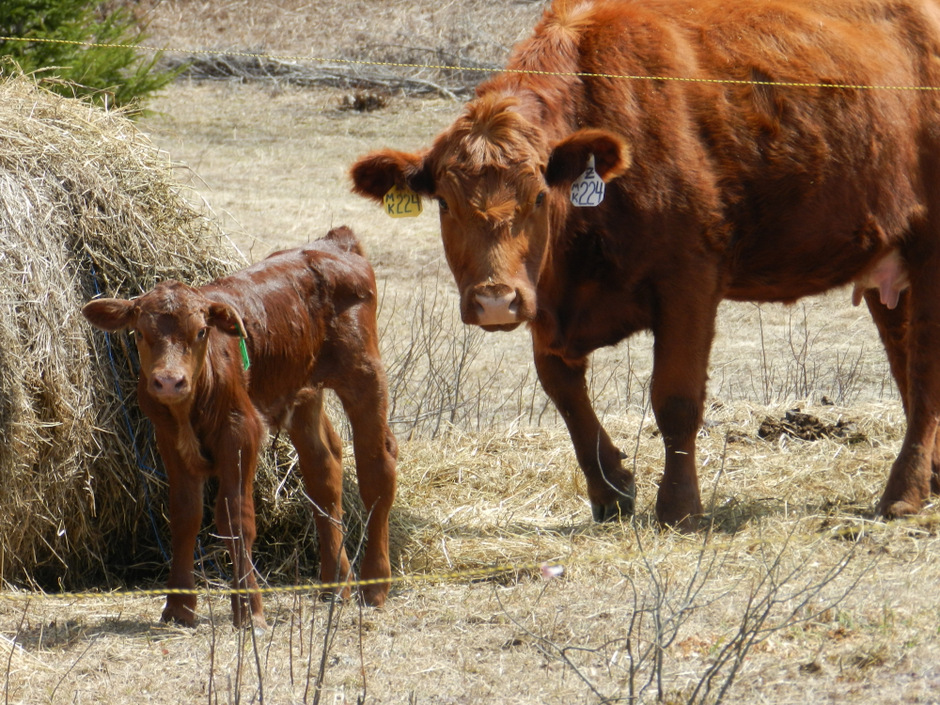


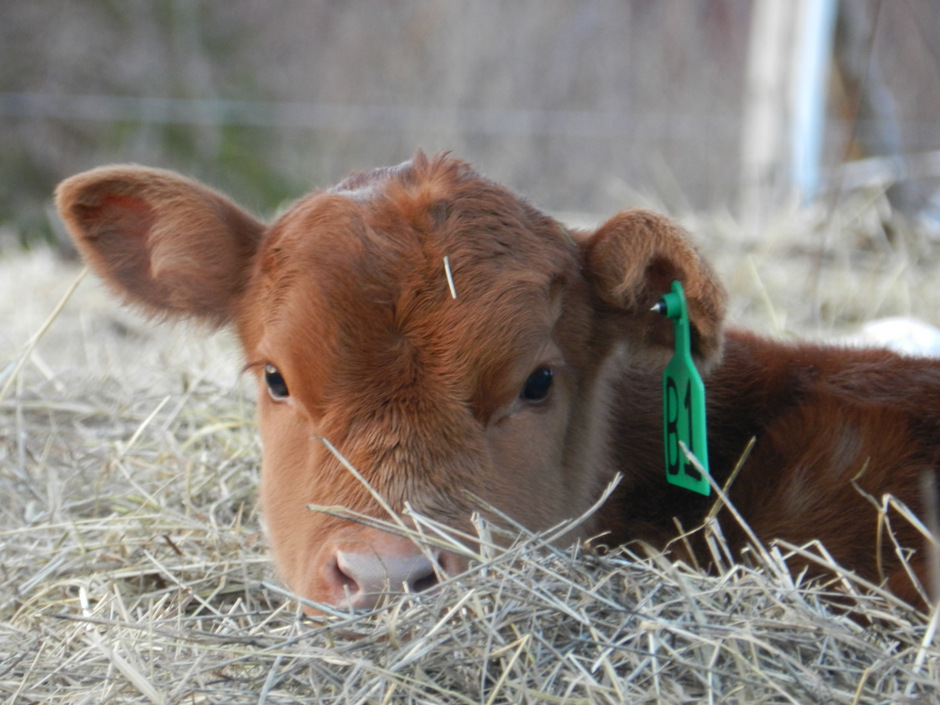




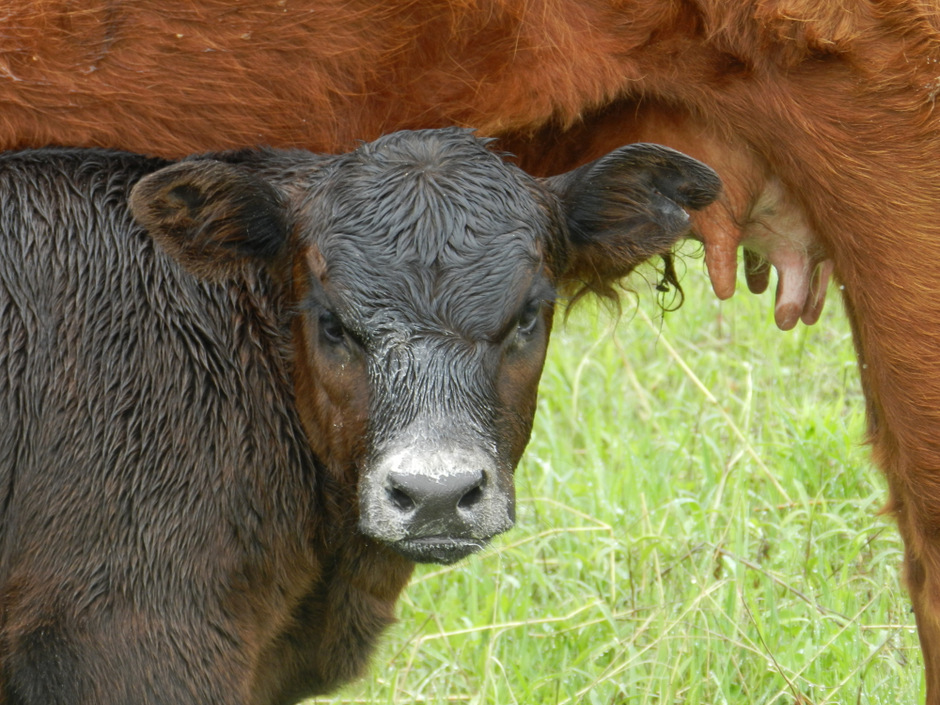
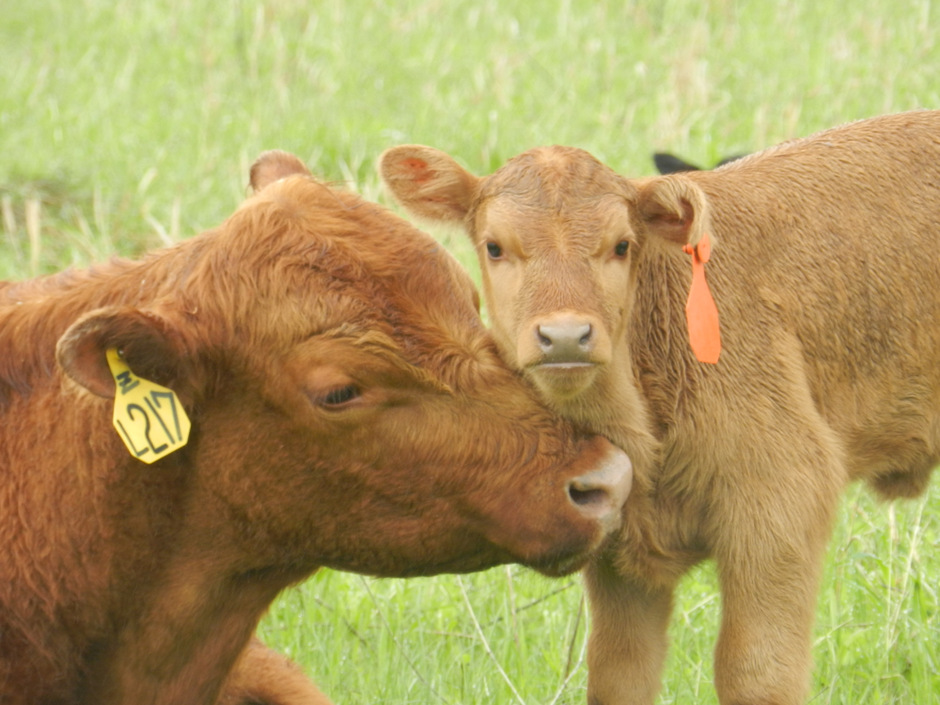

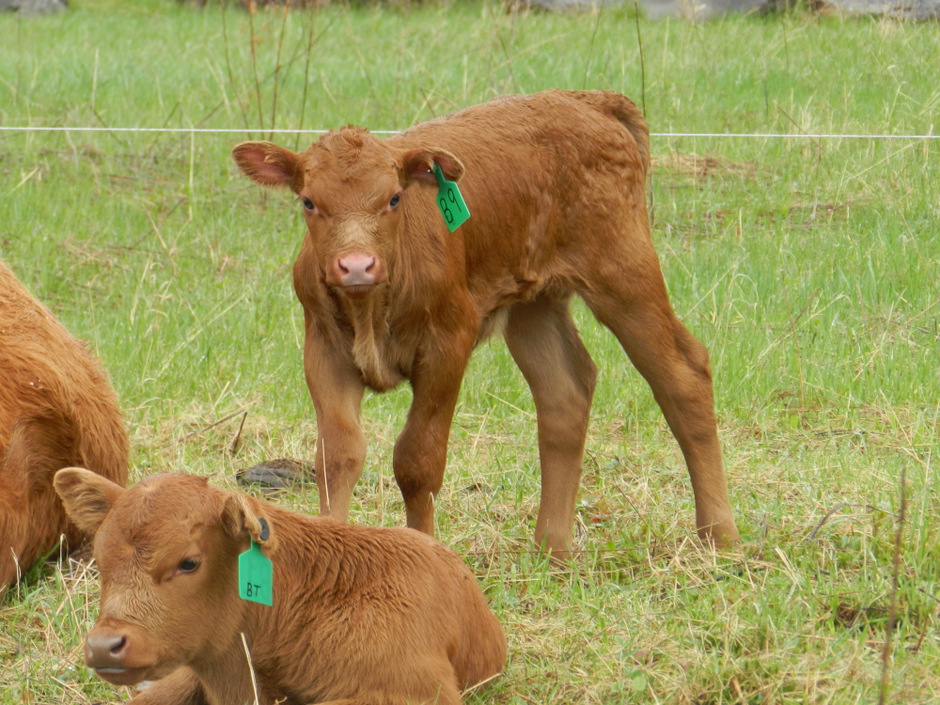
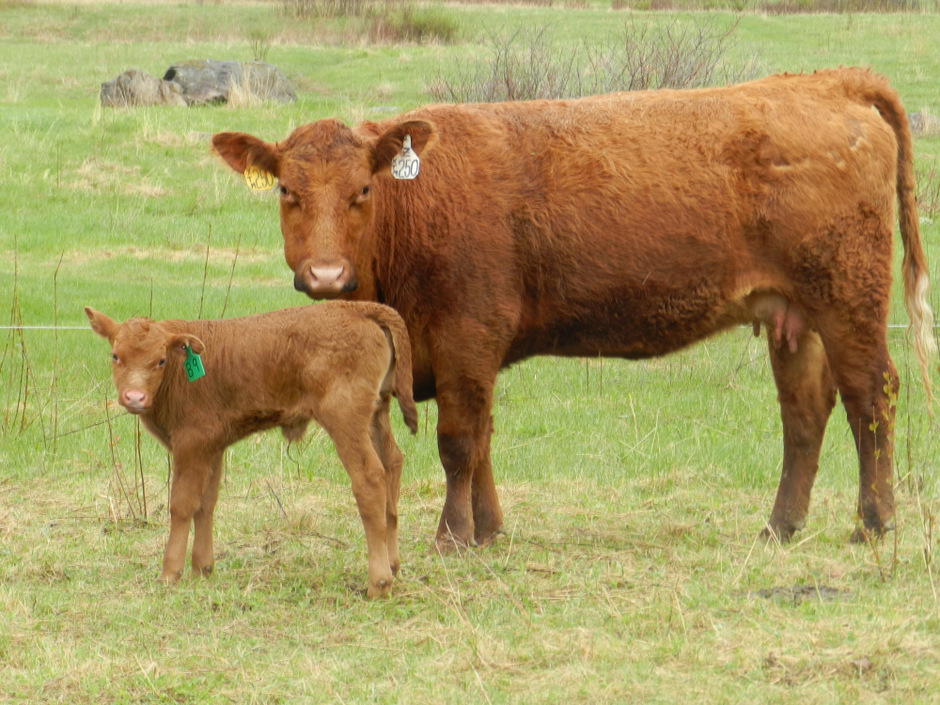
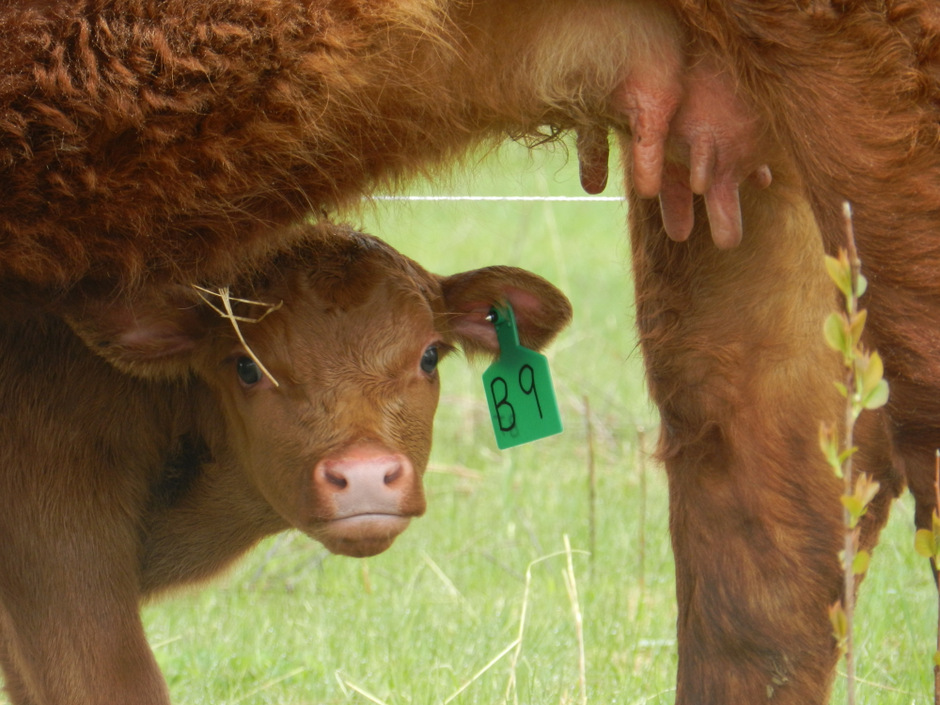
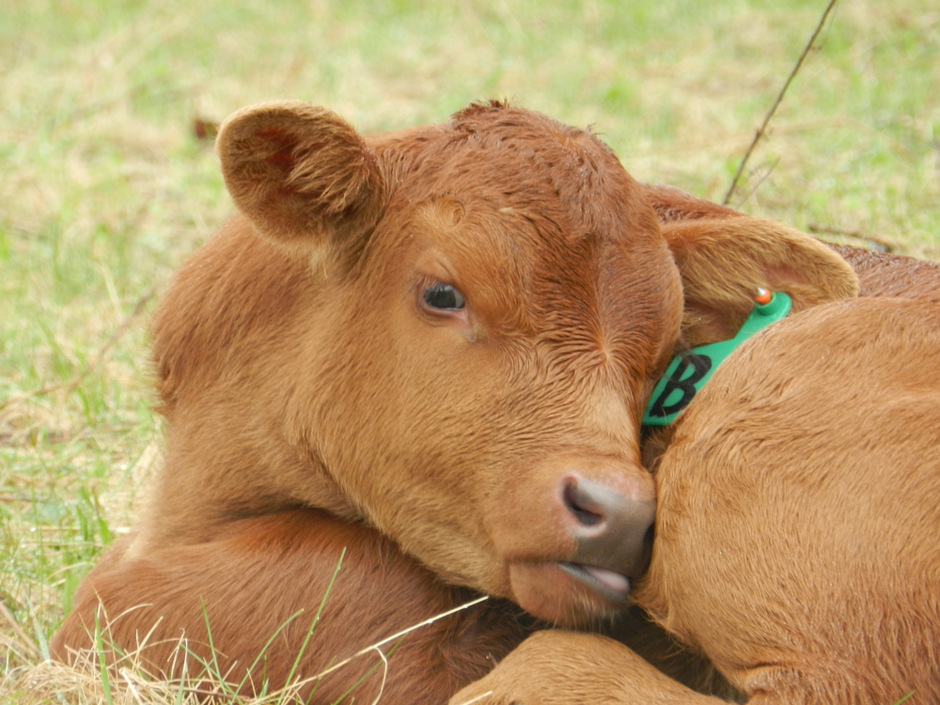
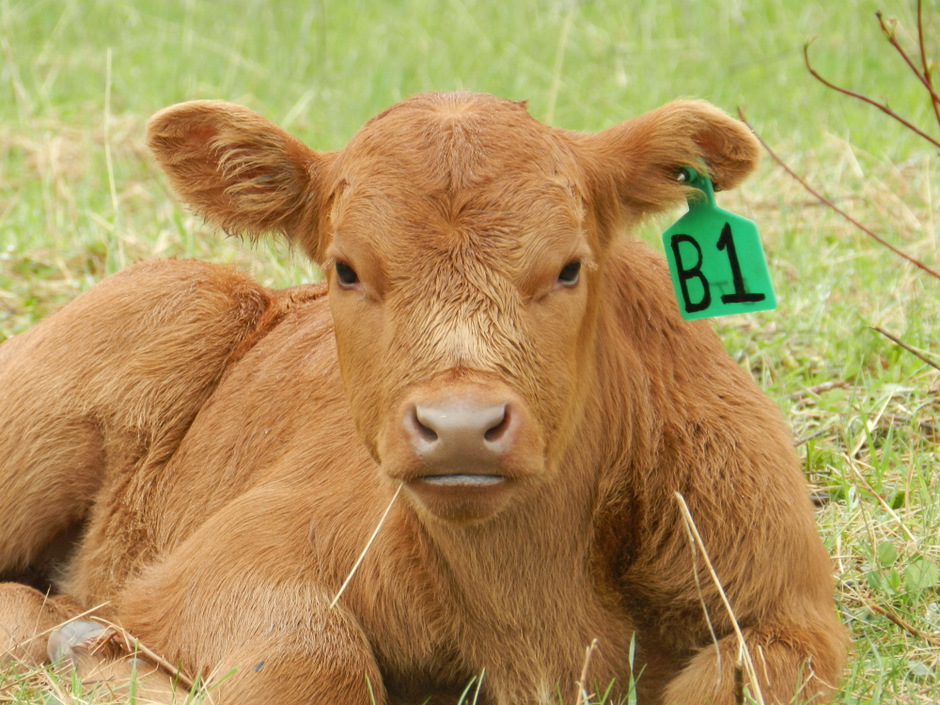
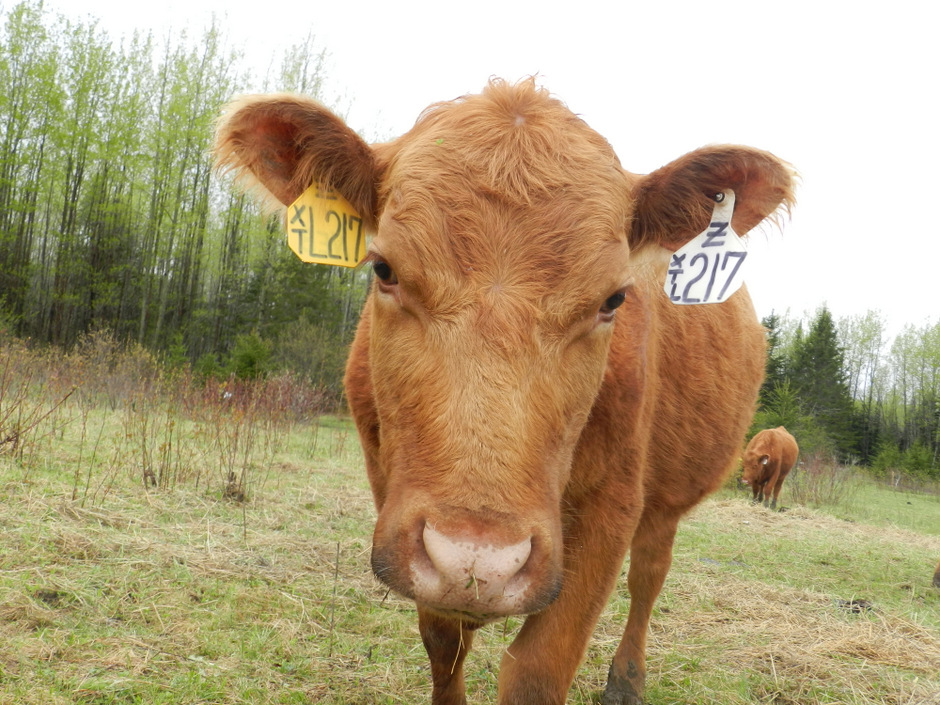

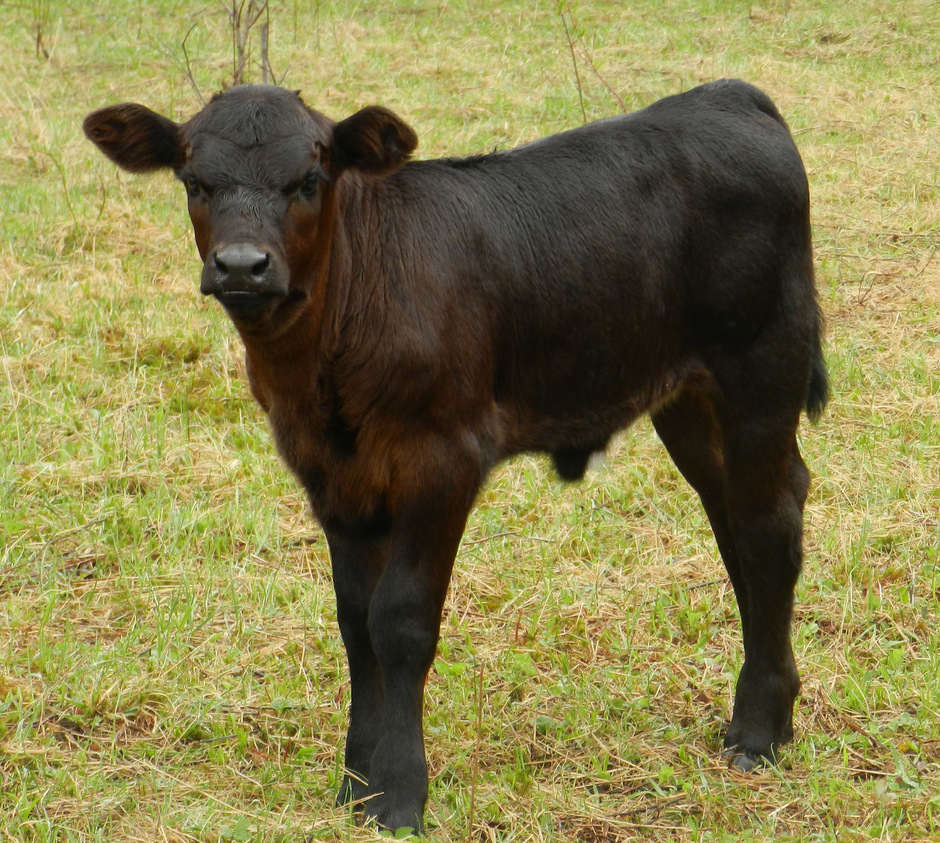




We thought it would be fun to provide a photo montage of our spring so far on the farm.
Please enjoy!
























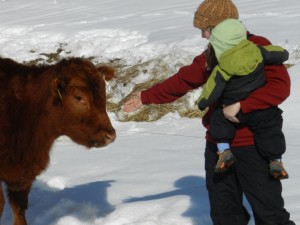 We have a famous farm mom here at the Wood Farm! Sara, Wyatt and the cows made Lancaster Farming news for their special Mother’s Day photo feature. We’re very proud!
We have a famous farm mom here at the Wood Farm! Sara, Wyatt and the cows made Lancaster Farming news for their special Mother’s Day photo feature. We’re very proud!

Our last few posts have been bouncing back and forth between our current calving season and our breeding season last summer. Today, we bridge that gap a bit with a post on what we like to call “Is that Heifer Really Pregnant? – aka Pregnancy Checks.”
Check out our past Breeding and Calving posts below:
Cattle Breeding Series – An Introduction
Lessons learned in selecting your bull
Our last post in our Cattle Breeding series found us nearing the end of our 60-day breeding season, wondering if all 10 of our heifers really were pregnant. From our observation sessions, we felt reasonably certain that eight of our 10 heifers had been bred. If not for those sessions, we really would have had very little clue as to what occurred during those 60 days. Our time spent with the herd and the observations that we recorded did (and continue to) provide priceless insight into the dynamics of our herd and all it costs us is a bit of our time…..
As we neared mid-September, our breeding season was coming to a close and we had winter on the mind. Specifically, we were coordinating our winter hay supply and putting together our winter hay bale grazing strategy. In the course of sorting through the logistics and crunching the numbers, it became increasingly evident that we simply could not afford – financially and otherwise – to carry open heifers through the winter. If one of our 10 heifers was not pregnant, she would be on the truck come Fall.
Since we had very little experience with pregnancy checking, we contacted our veterinarian, Dr. Simon Alexander of Exeter Veterinary Services to schedule a pregnancy check for all 10 heifers. We scheduled for Dr. Alexander to visit our farm in mid-November; he would conduct the pregnancy checks and we would also administer several vaccines at that time.
That gave us roughly two months to prepare for the visit. Roughly two months to figure out how exactly we were going to restrain these heifers in order for them to get pregnancy checked and to get their shots! The vet sure wasn’t going to be able to walk out to the pasture and simply “check” them where they stood! If only. Ha! If you remember our post where we talked about our lack of a tractor?? Well, we also lacked a holding pen with an alleyway and a squeeze chute with a headgate. These are items that we were fully aware we would need in order to work our herd – no mater if the herd is 10 animals or 100. When you work with large livestock, like cattle, you need a safe working environment for both you, the animal and your veterinarian.
While we would LOVE to have an alley and sweep system with a connected squeeze chute and head gate, we are far, oh so far, from ever being able to afford that system. That is the dream. So, keeping with having an open-mind and being able to be innovative, creative and flexible – on a fixed budget – we came up with an alternative. A very labor intensive alternative for Jeremiah but one we were confident he could accomplish.
Jeremiah was going to build our very own version of an alley and sweep system. At some point Jeremiah will write a post on his adventure in building our very own alley and sweep system. For now, suffice to say, this project ended up being a huge, monumental undertaking and it would consume every free second he had for those two months but the final product was so entirely worth it. I was so incredibly proud of what Jeremiah accomplished. The entire structure was built with wood he cut from our property and milled on our sawmill. Once all the wood was cut, he spent night after night, well past the sun set, putting the whole system together, nail by nail. It was unbelievable what he created.
With the completion of our alley and sweep system, we could check-off on one very critical component to our system. We still needed sort sort of squeeze chute and/or headgate to attach to our alley and sweep system. While we don’t live in a part of the country known for beef cattle, beef cattle farmers are here in northern Maine and they band together when a fellow farmer needs help.
We were able to borrow a portable livestock scale with a headgate and squeeze.
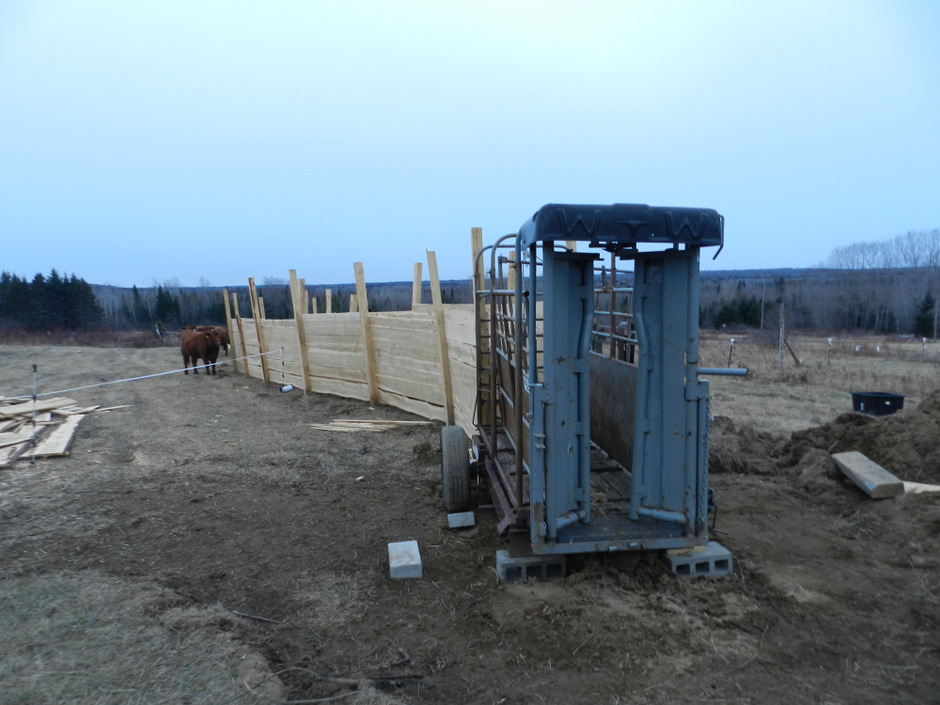


Our system was now complete.
We were ready for our vet visit and…….
to discover the fate of our herd and our entire operation.
We constantly spoke of all of the what if’s that could happen during our vet visit; most notably, we feared that one after one, our vet would announce “Not pregnant”, until all 10 were deemed open at which time we would probably assume the fetal position and cry. A LOT was riding on these pregnancy checks. Our operation could end before it really even started. That was a very real fear for us. Jeremiah and I lean towards more of a proactive approach, and we do not shy away from a bit of risk. We took a leap of faith with breeding 10 heifers to a yearling, unproven, bull.
We were about to find out if our leap of faith would produce rewards or sad, sad tears.

The day had finally arrived and Dr. Alexander was here, about to climb into the chute and pregnancy check our first heifer. Ironically, the first heifer in line was UL220. She is our youngest heifer and she ended up being our first heifer to have her calf this spring.
That first pregnancy check was a very big positive, literally and figuratively.
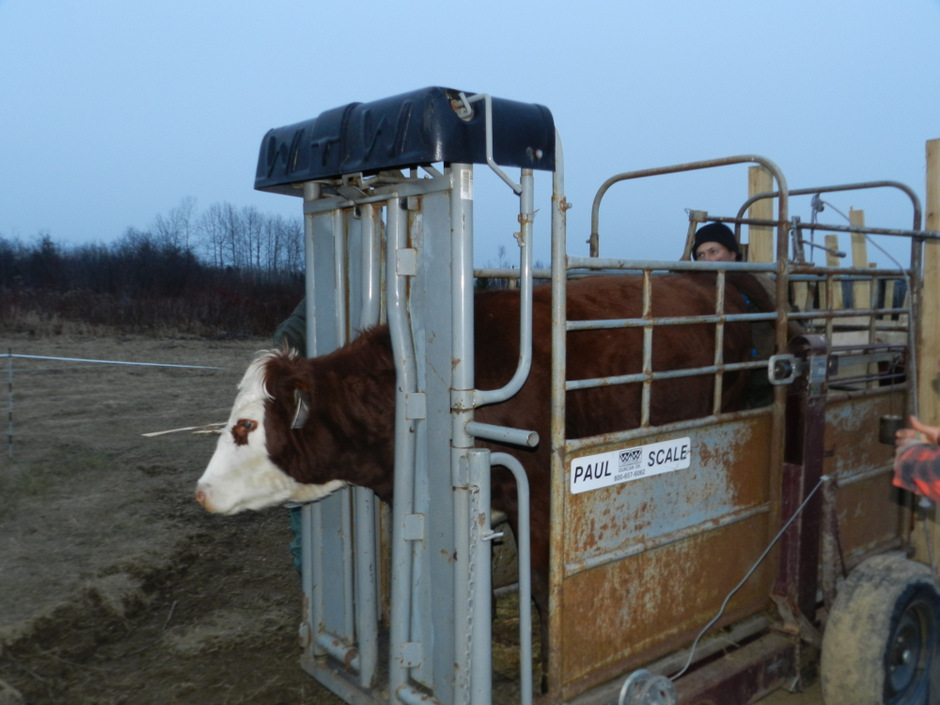
One by one, each heifer was guided into the squeeze chute, pregnancy checked and then given their vaccinations.
Each heifer was given three vaccinations: 1) Decotmax for parasites, 2) MultiMin90 as a mineral supplement and 3) Bovi-Shield Gold 5 for a range of respiratory diseases.
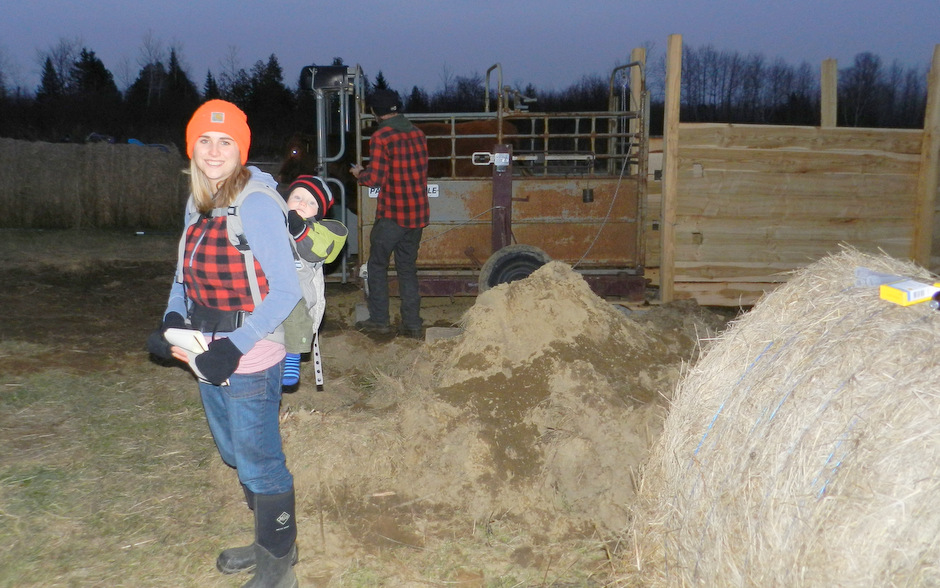
My responsibilities during this time were to document the event, with both written and visual records, and watch our 9-month old son. So, I strapped our son to my back, grabbed my notebook, pencil and camera, and I was good to go!
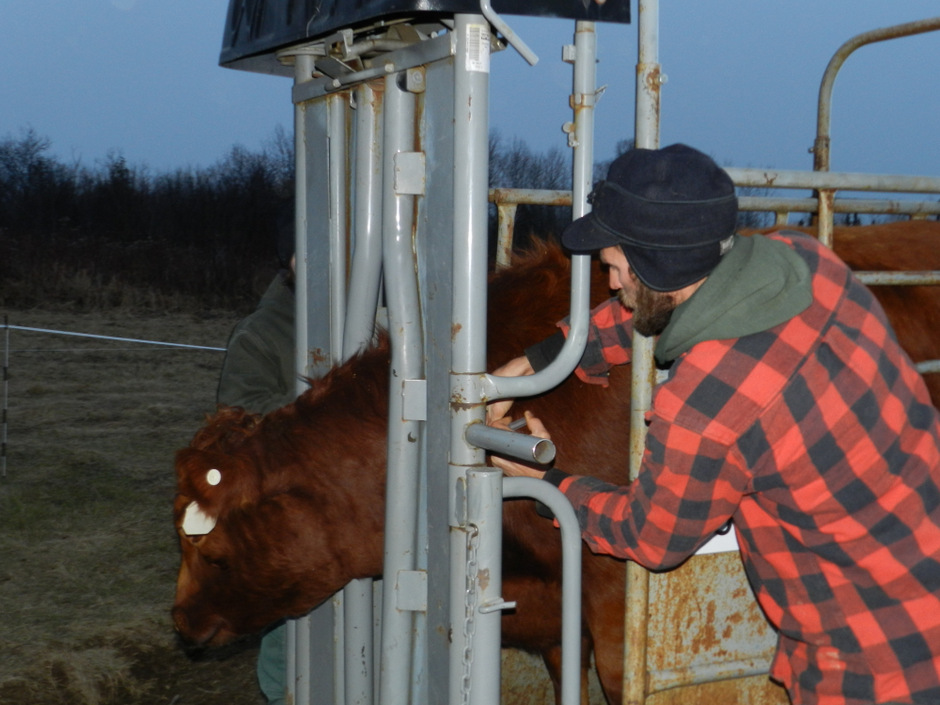
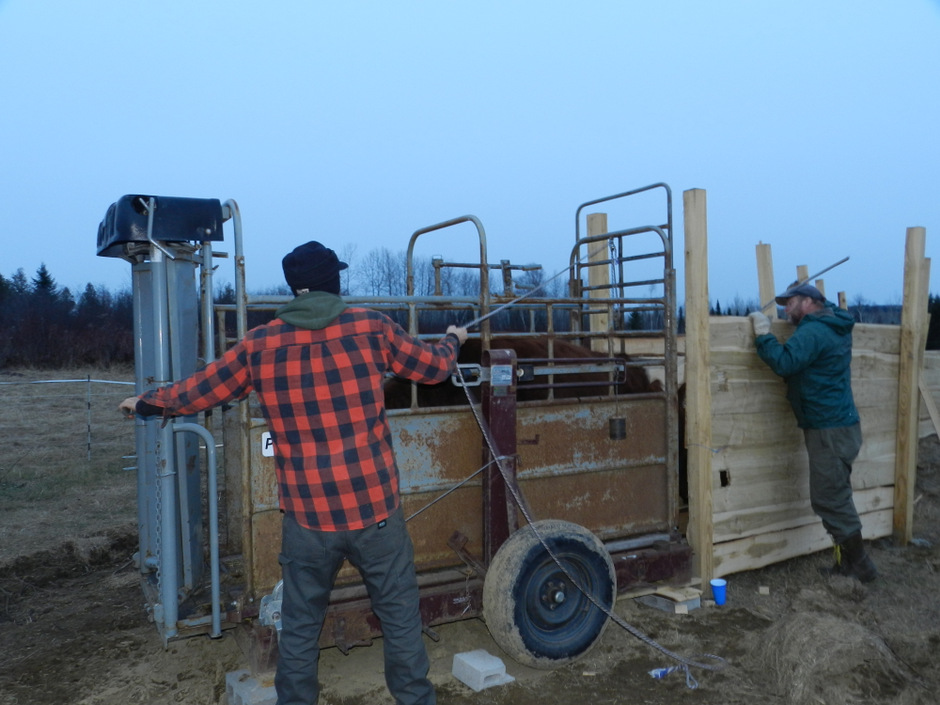
Jeremiah assisted in administrating the vaccinations as well as operating the headgate and keeping the entire operation running smoothly and safely.
Our good friend, Derrick, assisted with encouraging the heifers to work through the alleyway, into the squeeze chute.
All of our fears of the vet yelling out “Not pregnant” were quickly stomped out when one after one, our vet called out “Pregnant!”.
Folks, we had 10 pregnant heifers!! 100% pregnancy rate. We probably still would have curled up in the fetal position and cried – for joy – if we had thought of it.
We celebrated by getting a pizza, uploading pictures and transferring our notes from that night to our computer!
We were certainly not in the safe yet, though. We needed 10 live and healthy calves on the ground in the spring. The hard work was starting, we needed to get these pregnant heifers and their unborn calves through a northern Maine winter!
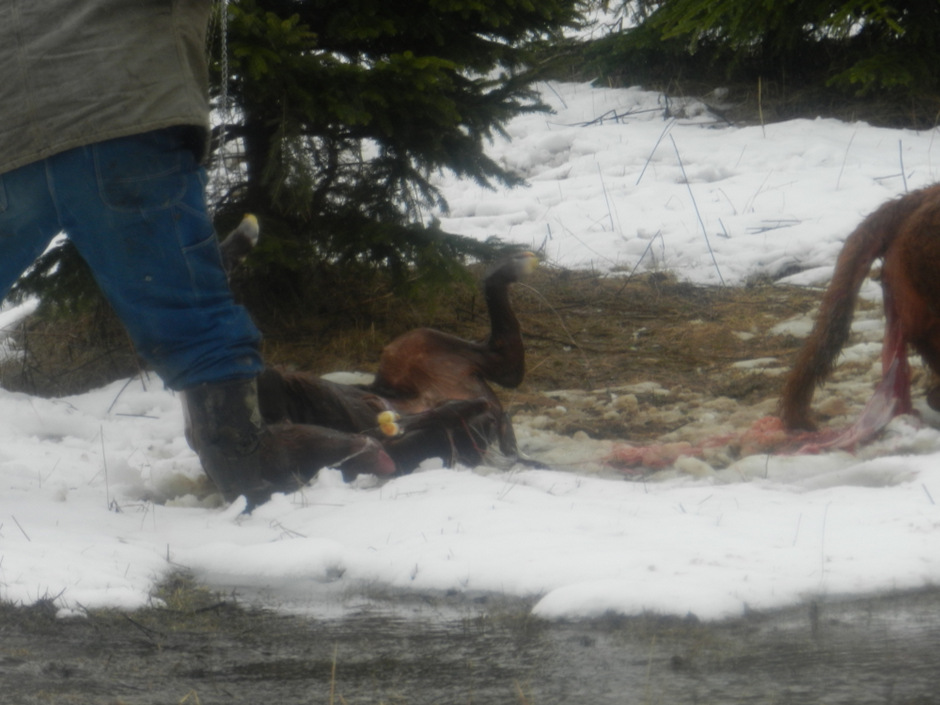
In our last Calving post, we shared the birth story of our first ever calf a harrowing and nerve-racking 1st calving experience for all of us.
Today, we continue with the story of that very special calf, B1.
Hours turned into days as we fought against the elements and the clock to save our very first calf.
Here is B1’s story….

After calf B1 made his entrance (with the help of chains) that snowy, cold and wet night, we really did not know what to expect and what exactly to do…. All of us were slightly in shock and to be perfectly honest, scared for this calf’s life. He was barely alive.
We were so fortunate to have our good friend and mentor, Gene, there with us. He guided us, kept us calm and focused us on the task at hand. In a kind and supportive voice, he told us we should have pulled the calf earlier. We learned a hard lesson that night. It was a beginners’ mistake. We should have pulled the calf 30 or more minutes earlier. I guess you don’t know until you actually go through it, right?
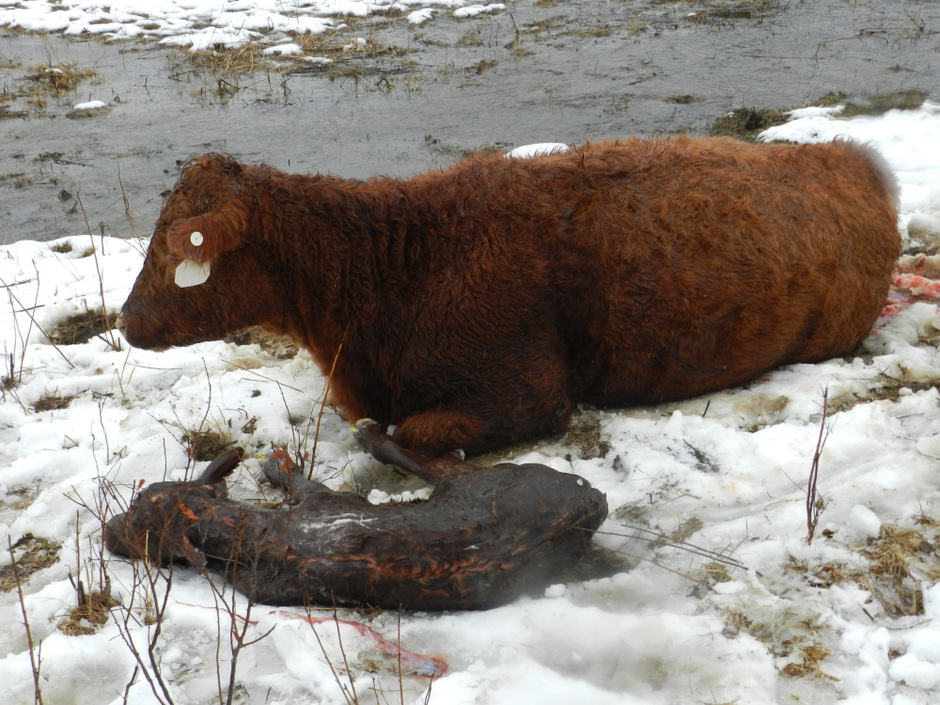
Due to being stuck in the birth canal for too long, the calf’s head and tongue were extremely swollen. His swollen, protruding tongue was the first thing we saw after he came out. I figured we would be burying a calf that night. Gene gently pumped …to help clear fluid from the lungs and stimulate breathing. The calf was breathing but barely. Gene told us to rub along the calf’s spine to help stimulate breathing as well. We rubbed and we rubbed. The breathing got a little stronger and we knew that this calf needed to stand and nurse as soon as possible. After a couple of halfhearted attempts, it was obvious that this calf was simply too weak, and too ‘injured’ to stand and nurse.

The temperature was quickly dropping and the pasture was a maze of little muddy rivers from the snow and rain that day. If we left this calf, in the hopes of him standing and nursing, overnight, we had no doubt we would be finding a frozen, dead calf the next morning. We had no intention of that happening. We were going to give all that we had to save this calf. We needed to get colostrum in this calf ASAP!
Colostrum is absolutely critical for the health of a newborn calf. Colostrum is often referred to as “liquid gold” and for good reason. This milky substance is full of vitamins, minerals, fats, carbohydrates and proteins, providing the very best nutrition needed to help build the immune system in those first critical days and to give the calf the best start possible for a strong and healthy body. Click here to read more about the importance of colostrum in the hours after birth.
We made the decision to load the calf in our sled, hook the sled to our four-wheeler and bring this little guy into the house for the night. We could hear the mother cow’s cries all the way back at the house. This was going to be a rough night for all.
Our immediate plan was to mix powdered colostrum and bottle feed it to the calf. Sounds simple and easy, right? Well, because of the calf’s extremely swollen tongue, he could not nurse the nipple on the bottle. For almost four hours, we worked as a team, one holding the calf’s head up (he was too weak to even hold his head up) and the other gently working the nipple into his mouth, squeezing in the colostrum and encouraging him to swallow the liquid. We had to be careful, though, not to force too much liquid on him; because the calf was barely swallowing, we did not want the colostrum to get into his lungs and for him to develop pneumonia.
All the while, we kept the calf wrapped in dry, warm towels in front of our wood stove. The calf did make a few more halfhearted attempts to stand but even with our assistance, he could not support his own weight. He simply collapsed to the ground every time we helped him up. By midnight, we had fed him around one quart of colostrum and he was dry and toasty. We left him in front of the wood stove, said some prayers, and went to bed.
In the morning, I could hear him in the family room, trying to stand. His weakness combined with our slippery, laminate floors were not a recipe for standing up. But, we knew he was alive and kicking! He had made it through the night. We had made it through one small battle but the war was far from over.
That morning, we immediately went to work, mixing up another bottle of colostrum. But, the calf still could not nurse the bottle. If we ever wanted this calf to stand on his own and walk around, we needed him to build up his strength. The clock was ticking and every minute was precious. Bottle feeding simply was not going to work. We were going to have to tube-feed this calf.
Throughout the course of that day, in total, we tube-fed the calf almost four quarts of colostrum. In addition, we also spent a lot of time encouraging the calf to stand and helping to support him while standing.

Despite our efforts, this calf appeared to have given up. He had no desire to live it seemed. Luckily, the weather conditions started to improve and we decided to take the calf to visit his mom. She immediately welcomed him back and went to work on grooming him and encouraging him to stand. He did not stand during this visit but we observed much more spunk and a definite will to live.
Temperatures were predicted to dip down below freezing that night so we had no choice but to bring the calf back in for the night. It was simply heartbreaking to take the calf away from his mom…again… She bellowed and ran after us as we raced to get the calf out of the pasture and to the house without her attacking us. We were actually very pleased by her protective nature and natural mothering instincts. She was already a very good mom.
Again that night, we prayed that we would wake up to a live calf. We set our alarm clock for a middle of the night tube feeding. During that middle of the night feeding the calf peed for the first time and pooped two times. Very encouraging. We found another poop and pee when we woke in the morning. The calf was trying with everything he had to stand. He had some will to live now. We took him back to see his mom. Both calf and mom seemed very relieved to be back together and imagine our surprise when that calf stood on his own and took a few wobbly steps!
They stayed together for the rest of the afternoon. To our knowledge, the calf did not stand and walk again. He certainly was not nursing. The time had come for his afternoon feeding. This time was going to be different, though. We had talked with Gene and he strongly advised that we find a way to keep the calf outdoors overnight. He worried about respiratory issues arising from the back and forth, from inside to outside. This calf needed to adjust to outdoor conditions, both day and night.
Heavy rain was predicted for that night and we knew that we needed to provide some sort of shelter for the calf. So, using scrap materials on the farm, we set-up an area for the calf inside one of our storage units. We loaded the calf back in the sled and brought both mom and calf to the pasture with the storage unit. At this point, things got a bit dicey. We needed to give the calf his afternoon tube feeding. In order to do that, we needed to bring him into the storage unit and put up a makeshift gate to prevent the mom from attacking us while we fed the calf.
In the course of trying to get the calf from the sled to the storage unit (the calf kept standing up and walking away from the unit), the mother cow decided that enough was enough and rammed Jer to the ground. Understandably, this mother cow was at the end of her rope, fraught with fear for her and her calf’s lives. What she did was a natural instinct for her and my response back was a natural instinct as well. There will be times in your life where fear and adrenaline will drive you to act, to act before your brain even processes the potential danger you are putting yourself in. You don’t think, you just go. After Jer hit the ground, I did what I had to do to protect and shield him from the mother cow while he regained his footing. Fear drove both me and that mother cow for those intense minutes. She was protecting her own and I had to protect my own. Jer and I work as a team on this farm. This is our shared dream, and I wasn’t going to let it end that afternoon.
We need to be reminded that these animals are very large and very strong and when you add in elements like fear, their strength will seem endless. This behavior is something that you need to respect. You have to be alert and on yours toes every second while working around these animals.
Moving on, we eventually did get the calf into the storage unit and tube fed him two quarts of colostrum. Not knowing if we would get this opportunity again with him, we went ahead and worked the calf. Using the supplies in our calving bucket, we gave him a shot of Multi-min, tagged his left ear, banded him, and squirted iodine into his navel to help prevent infection. We also did a hoof measurement to try to get a weight. We reunited the calf and the mother cow, and we walked away from the pasture that afternoon a little more seasoned and a bit smarter than when we entered it.
This would be night three for this calf. We were extremely anxious going to bed that night, fearful that the calf would stumble out of the storage unit and drown in the rain and mud. Jer checked the mother and calf in the middle of the night and all was well.
In the morning, I immediately jumped out of bed, jammed my feet into my muck boots, grabbed my hat and jacket and booked it to the storage unit pasture. As I approached the pasture, I could see a brown form huddled near a hay bale. I ran faster and could see that it was the calf. He had made his way out of the storage unit and walked a good distance to the shelter of the hay bales. As I ducked under the fence and approached him, he moved. I was almost dizzy with relief. I could have cried. As I knelt down beside him, he immediately jumped up and walked straight to his mom. What he did next was simply a miracle – he nursed him mom. I stood in shock and in awe of the sight before me. Again, I could have cried. I called Jer on the phone and told him that I didn’t think we would have to worry about a bottle calf, we had a nurser on our hands!!


Calf, B1, continued to nurse his mom that day and he never looked back. 🙂
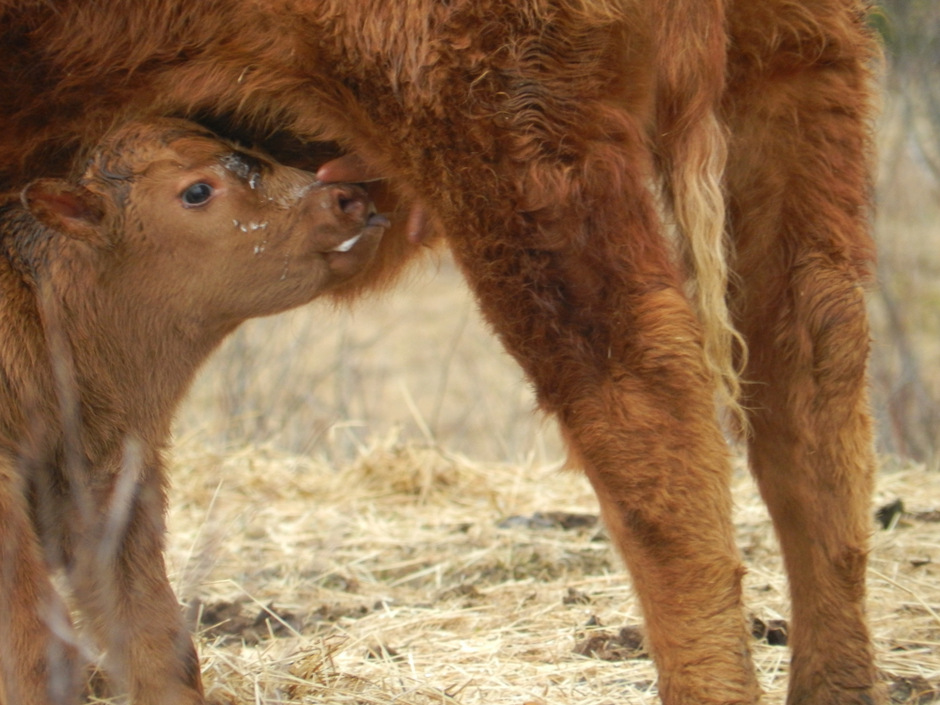
As I am writing this post, B1 is frolicking in the pasture with our other seven calves, strong, healthy, and with a definite will to live.
And that, folks, was our introduction into the world of calving!
Thank you for sharing in our story and please enjoy some more pictures of B1, below:
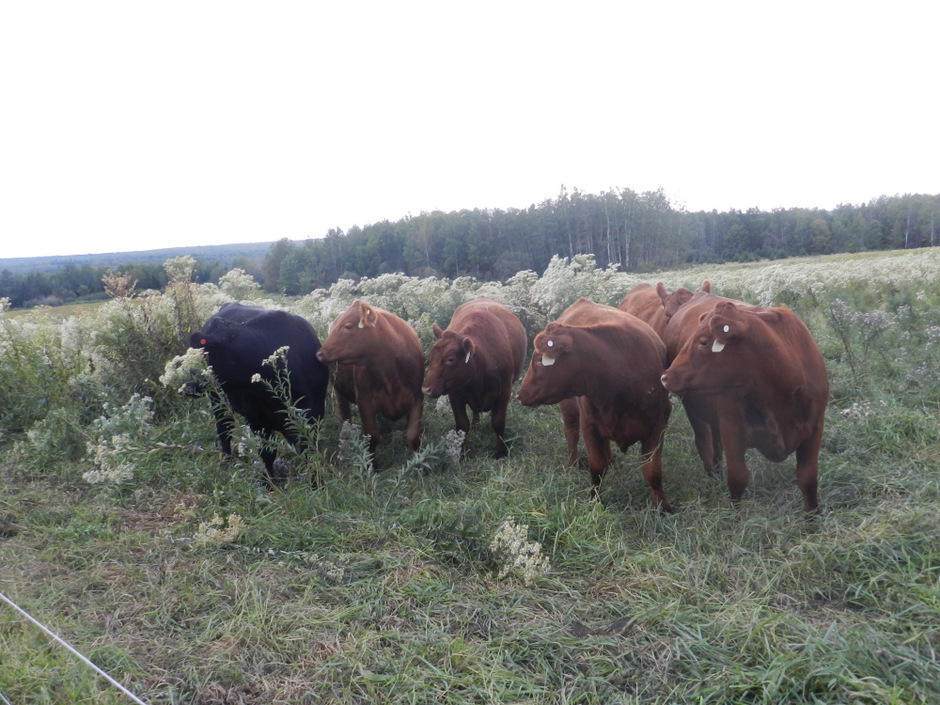
We continue with our blog series on Cattle Breeding with information, advice, and tips on the day-to-day routine during the active breeding season.
Click on the links below to read the other posts in our Cattle Breeding Series.
Cattle Breeding Series Introduction
Selecting Bulls for Your Breeding Program
Lessons Learned in Selecting a Bull
We only have one breeding season under our belts so we are far from being experts on this subject. We are learning every day and we welcome advice and tips.
Today we would like to share what our day-to-day routine was during the cattle breeding season as well as other information we feel is important to consider and understand during the active breeding season.
The work doesn’t stop when your breeding season starts. The most critical and important work is just starting…..
After deciding when our breeding season would be and for how long, and after selecting our bull and having him arrive at our farm, our first step in starting our first ever breeding season was to introduce the bull to our herd.
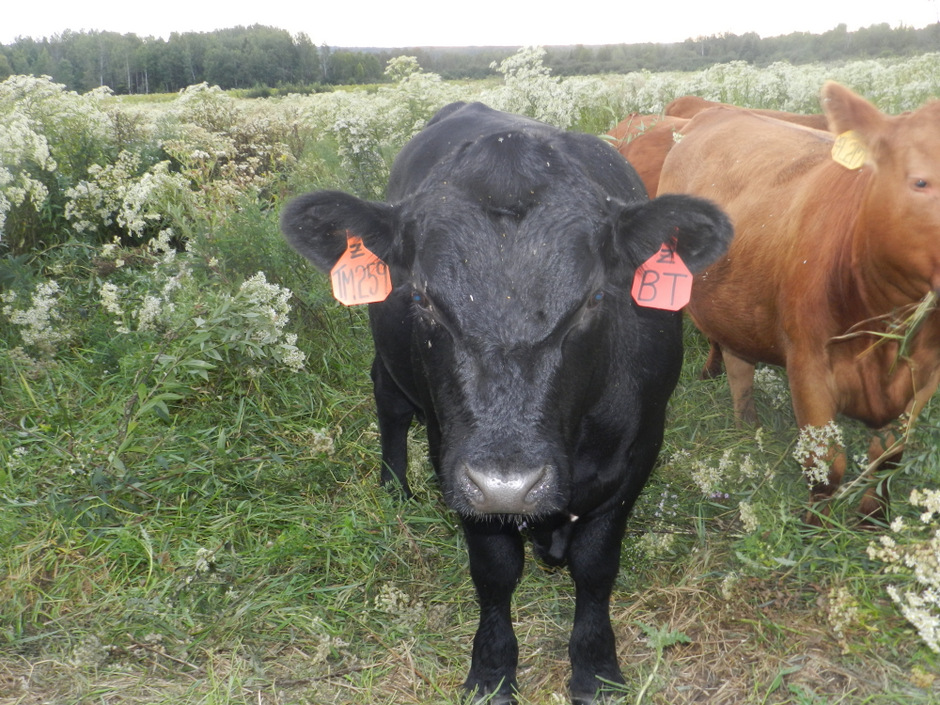
In our case, our leased bull was owned by the same person who sold us our 10 heifers (our friend, Gene). Therefore, we figured it would be easier all around if he just came along with our heifers in late-June.
Because our bull came with our heifers before our breeding season started, we had to set him up in a pasture on his own. Oh my, was that the longest three weeks in all of our lives! He cried for those heifers, and he stormed around his pasture like a, well, like a bull on a rampage! He was not impressed with the situation.

We let the bull into the herd on July 13, 2013 and he was literally off and running. He bucked and ran and started mounting the heifers like it was going out of style. The heifers were running around as well, bucking, headbutting and mounting each other. It was quite the show to say the least.
That bull was in heaven. He was with his ladies. All was right again in the world. So, with that flamboyant introduction, our first task was done, the bull was with the herd and we were off and running on our first breeding season!
If you were to ask us what the key ingredients are to having a successful breeding season, we would say that, besides having good animals, it would be to document, document, document, record, record, RECORD! We can not stress enough the importance of good documentation and organized records during the breeding season. Essential, you are working in the dark in regards to when you calving season is if you don’t keep consistent and accurate records.
Prior to the start of the breeding season, we made an Excel spreadsheet to record our observations during the breeding season. We noted the date we introduced the bull and noted that the herd was cycling when we introduced him. In addition, throughout the season, we made notes specific to each heifer, on whether she was showing signs of estrus and if we had seen her bred, and any other pertinent observations or comments on the herd and the bull.

Our priorities during the breeding season were to try to observe and record active breeding as well as pinpoint when the heifers were in estrus or cycling. To help accomplish this we had twice daily, 30-minute minimum, observation sessions of the herd, where we simply watched the herd and documented our observations.
Our goal with these sessions was to simply sit/stand and observe the herd. We did not want to bring any attention to ourselves and/or distract the herd. We simply wanted them to go about their normal activities.
While we were hoping to pinpoint active breeding, we were also interested in any behavioral activity that would suggest the heifers were in estrus or cycling. This includes mounting each other and/or the bull, headbutting each other, sniffing each others rear areas, aggression, a bent tail, and vaginal discharge, with the last two as possible indicators of a successful breeding.
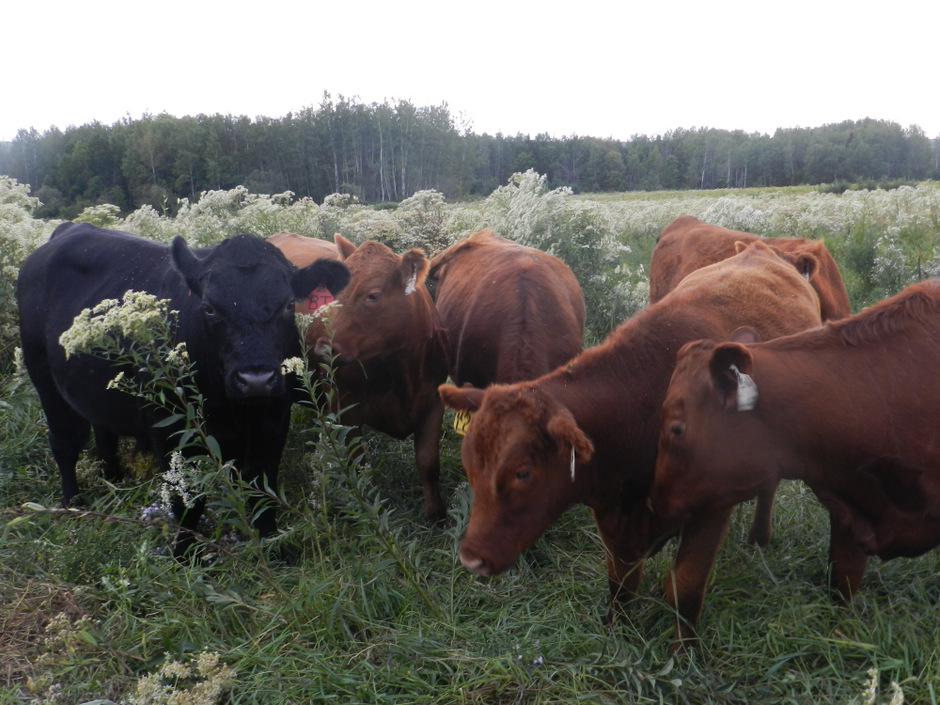
In addition, we also learned to watch how the bull moved around the herd. If we walked between him and a heifer and he did not move back to that heifer, odds were she was not cycling. On the flip side, if the bull was almost obsessively following a heifer, sniffing and nudging her, she was likely either in estrus or about to come into it.
At times, the bull would also exhibit the Flehmen response, where he would curl his upper lip back and extend his head out in an effort to detect if a particular heifer was cycling.
This was our first breeding season and we were breeding a yearling bull to heifers, so we were all newbies. There were often times that we observed a heifer “acting” like she was in estrus (headbutting, mounting) but we thought she was pregnant! Our friend, Gene, reassured us that sometimes pregnant heifers and cows still like to get a little frisky! But, there were a handful of heifers that simply did not take their first cycle and truly were cycling again. For whatever reason that pregnancy did not take or wasn’t viable.
As the breeding season progressed, we got a bit more confident in our ability to detect breeding behavior and started to anticipate our heifers next estrus cycle. By the end of the breeding season, we felt pretty comfortable with stating that at least eight of our 10 heifers had been bred. We had observed a mating session and they did not come back in estrus again during the season. As for the other two heifers, we did not observe an actual mating session but they did show signs of estrus at some point during the breeding season. We assumed that they had been bred as well. But, considering this was our first breeding season, we needed to be certain that all 10 heifers were pregnant. Financially-speaking, it would make no sense for us to carry open heifers into the winter. Any open heifers would be culled from the herd. We needed calves on the ground in the spring and every heifer needed to contribute to that calf crop.
So, we made a phone call to our veterinarian and scheduled a pregnancy and wellness-check on our farm in mid-November.
The day of reckoning was coming!
Click here to read about the results of our pregnancy check.